Scotland finally confirmed! As well as, and I am not exaggerating, the weirdest game mechanic this blog has ever encountered.

For context, the only time Scotland has entered the All the Adventures project so far is with Danny Browne, and never with any commercial software. Impact Software — which existed from 1982 to 1984 — has an address listed in Edinburgh. Residential zoning, so likely another bedroom coder, in this case, Ian Richards. Only one other person seems to be associated with the company, Peter Lovett, who wrote their version of Star Trek.
Mind you, despite that status, the company racked up what feels like an impressive list of stockers.
Does this indicate professionalism? It does make the covers of their games puzzling. You see, they all have the same design with the company name as IMPACT SOFTWEAR.
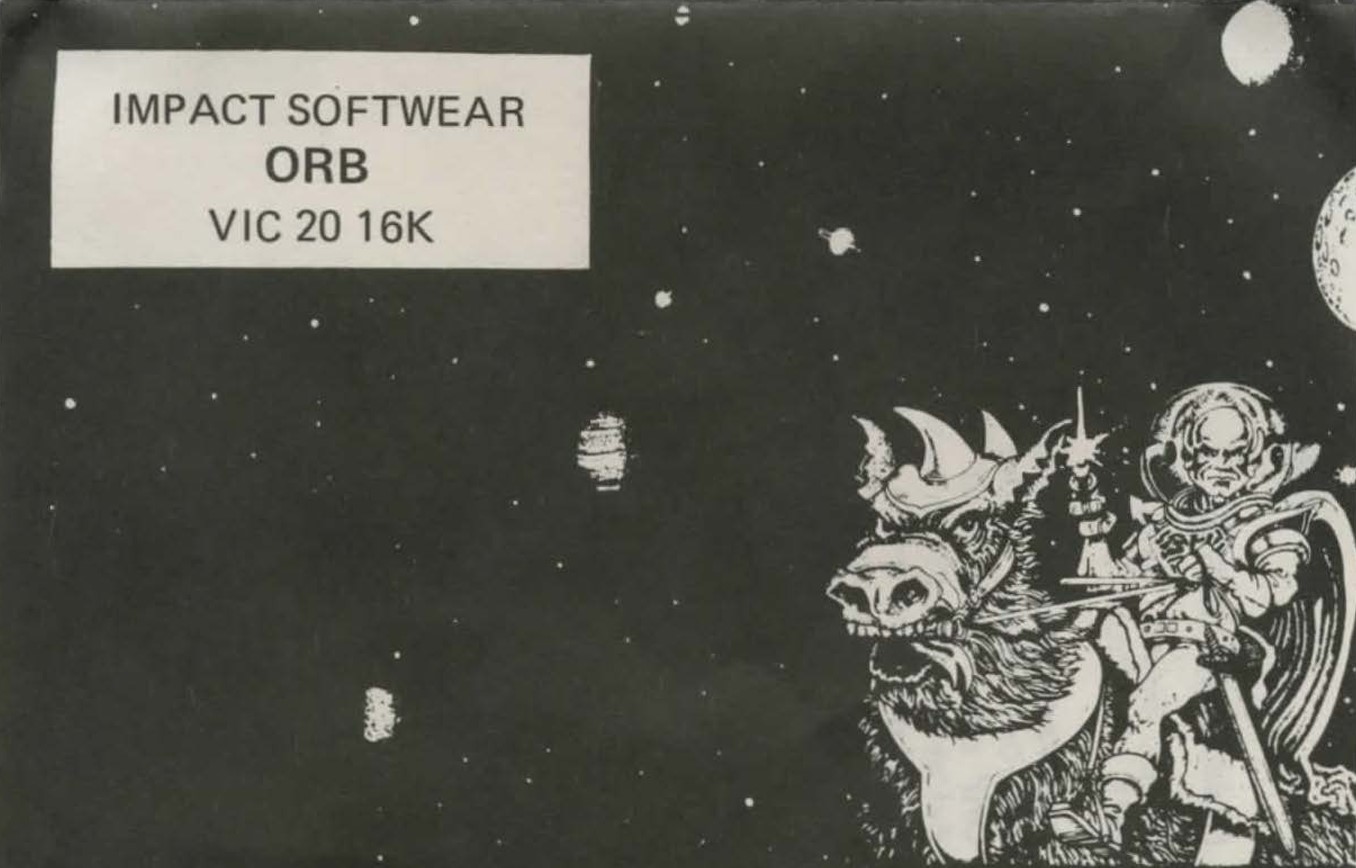
From the Museum of Computer Adventure Games.
A a full cover includes the address with “ware”, but this quite earnest ad from November 1983 does include the “WEAR” spelling. I’m guessing it’s an in-joke, and maybe an intentional discussion point, like how mistakes get more people to engage with Tiktok videos?
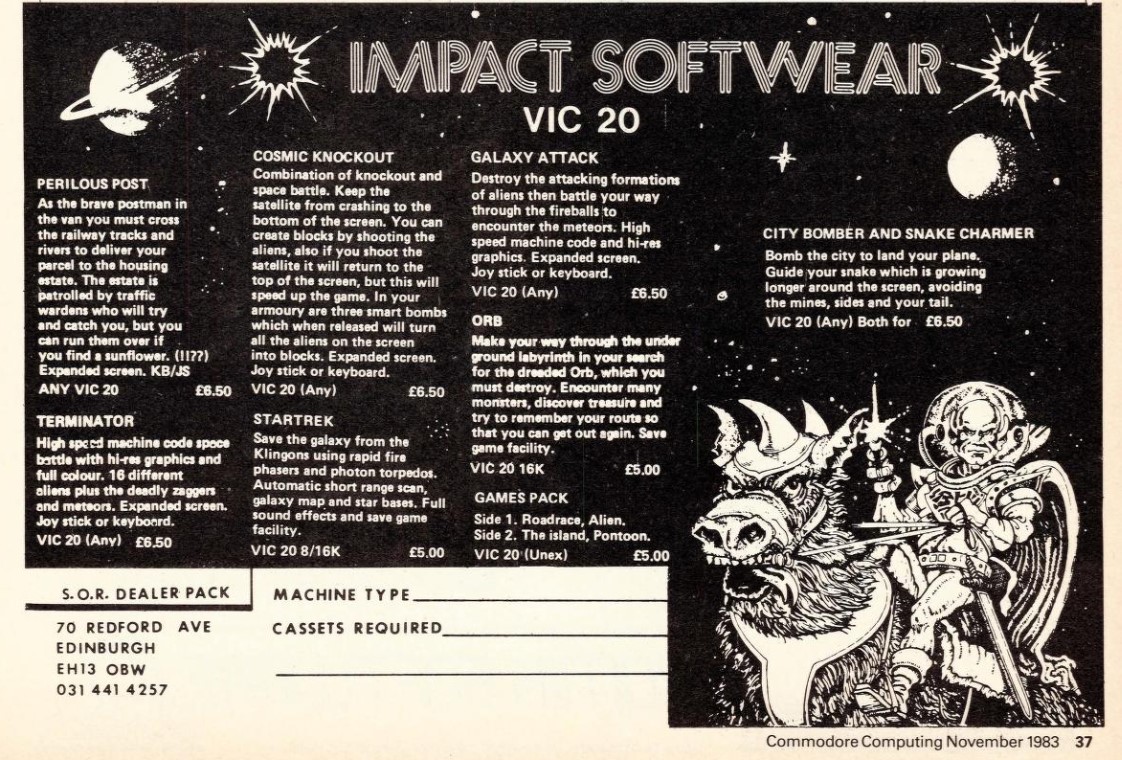
Ian Richards incidentally did keep in games afterwards through the 80s, but let’s focus on today’s selection, Orb.
Make your way through the under ground labyrinth in your search for the dreaded Orb, which you must destroy. Encounter many monsters, discover treasure and try to remember your route so you can get out again. Save game facility.
The game includes a mini-map similar to Wolstencroft’s game Quest. I began the game wondering if there was some influence. After playing the game, I am 99.999% sure there was influence. I’m guessing the author encountered Wolstencroft’s game on MZ-80A before deciding to roll his own VIC-20 (and later Spectrum ZX) version.

The original Quest game was essentially a big logic maze where you had to work out the right sequence of moves to pass through safely. For example, with the meta-map above, your goal is to start at the opening area, go and get a key, return to the opening area to open a chest with the key, then escape back out.
To start, you can travel by some orcs (which you can only do once). Once in the “second area” you can grab the key and some coins. You then use the coins to travel to a third area with a cross and a knife, then loop back to the start, using up the knife in the process, but leaving the cross in your inventory. You’d then normally be trapped (because the orc route only works once, and you’ve also used up the spider route) but since you have the cross now, you can take the devil route out to escape.

Orb imagines the same concept but with all the objects randomly placed, and truly random; not placed in a way where there is any guarantee you’ll have the right tool for the right room. Some deadly rooms (which you’ll need to pass through!) have no tool to get by at all and will just kill you outright.

The mini-map in the upper left is also the same as the MZ-80A game.
Here’s the initial portion of Orb’s map to help illustrate:

In one of my playthroughs, the only item that was generated in the initial area was a cross. The cross is used to get by a vampire (not devil this time). However, we are hemmed in by a werewolf (needing a sword) and a pit (needing a ladder). Sometimes when going into a werewolf room the creature will be out the first time through, so you can pass through safely, but it turned out not to be the case here. We have a situation where it is impossible not to die.

If you have a sword, this is what happens to the were-wolf. The were-wolf stays dead, so you technically don’t need a sword for a second pass-through. There are rooms with snakes where you need a sword every single time, though.
Here’s a more central part of the map:
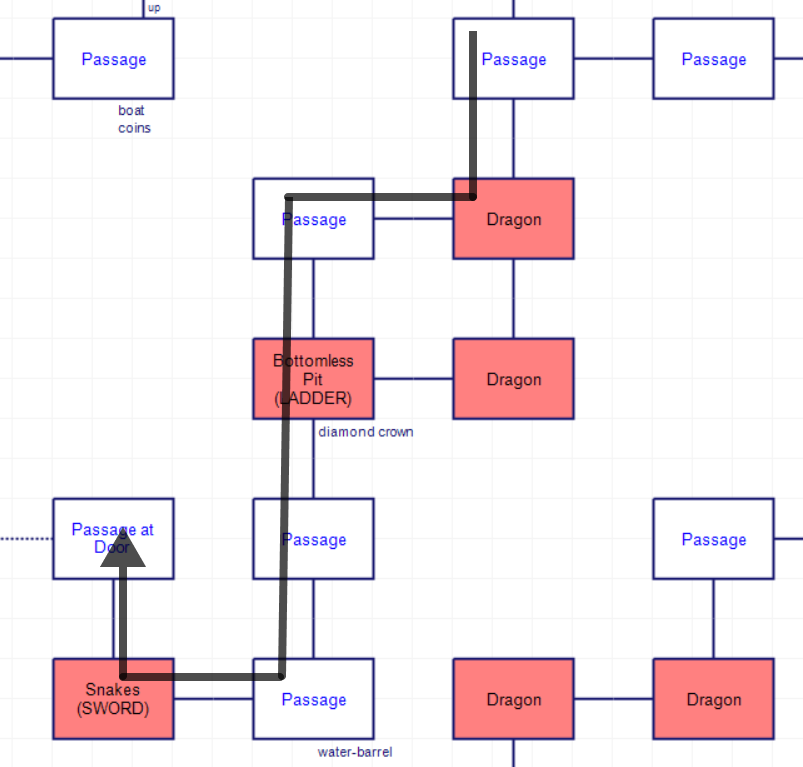
This is an actual path I took during my “““winning””” run. I did not die passing through the dragon; some enemies have two-square lairs, and the general idea is that if the monster is in one side of the lair it will leave the other side empty. (There was no way to “predict” I’d be safe — it’s just a coin flip.) I also had the ladder and sword so I was safe moving past both the snakes and the pit. However, when trying to backtrack later, there was no way to avoid the dragon on a repeat pass-through. In many cases the 2-square lairs are positioned such that you are required to pass through both squares anyway, so it doesn’t really matter if you meet a monster in the first square or not: you’ll have to die anyway. And there’s the bonus chance you might meet the monster in both squares, dying twice. Fun!

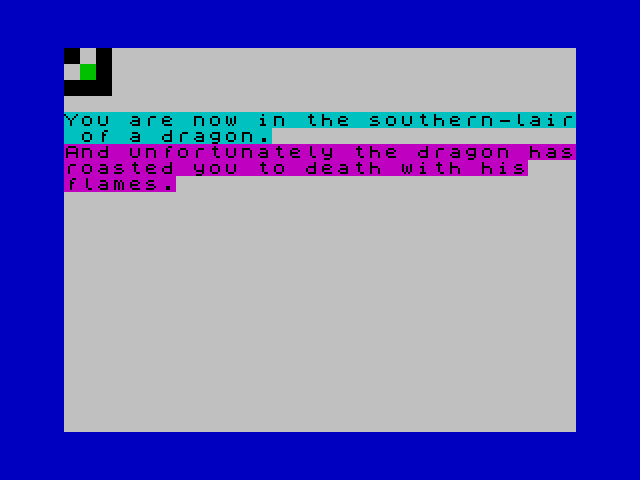
So does the game just generate a bunch of impossible maps? Well, no: the game lets you cheat, as a feature. When you die, the game kicks you out of the BASIC source code. Then you can type CONT or CONTINUE (VIC-20 or Spectrum ZX) and then game will resume in the next line, and act as if you caused a reality shift where you survived the obstacle anyway. If you die at a pit, you magically have a ladder (even if you really don’t, and it isn’t in your inventory after). If you are in a flooded room, you happen to have a boat.
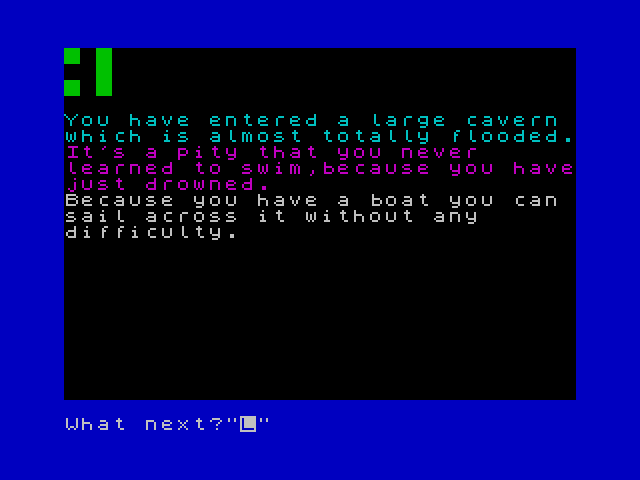
The game literally quits and stops executing upon death, and then uses what is essentially the operating system’s debugging command as a central mechanic. The game goes on directly and keeps track of how many continues you used, as sort of a “high score”.
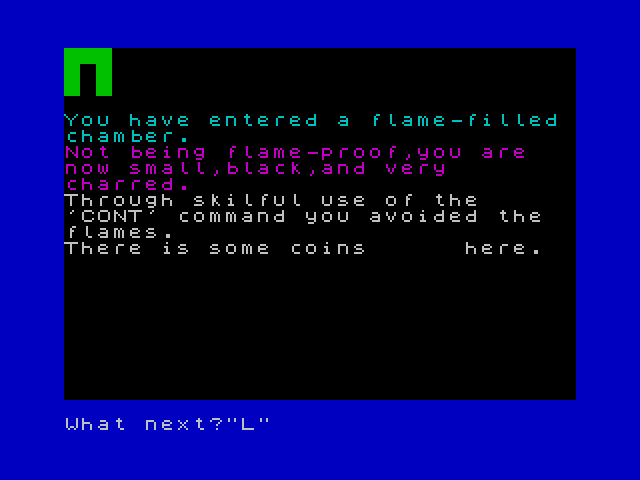
This sounds so outrageous it might loop around to being a good game mechanic, but there is no way to predict where all the objects go, or even if an object spawns at all (on my “winning” game a cross never appeared). Additionally, there are plenty of obstacles like dragons or Satan who have no counter; you have to die to pass through.

Even accepting the game is stomping all over the concept of narrative verisimilitude, and imagining we have the Reality Stone from the Marvel movies, this just doesn’t work; the main appeal of the logic maze is completely destroyed.
There aren’t any puzzles, really; there’s a rusty door you can apply an oil can to, and to get the Orb to the furnace to destroy it you need an extra key along the way.
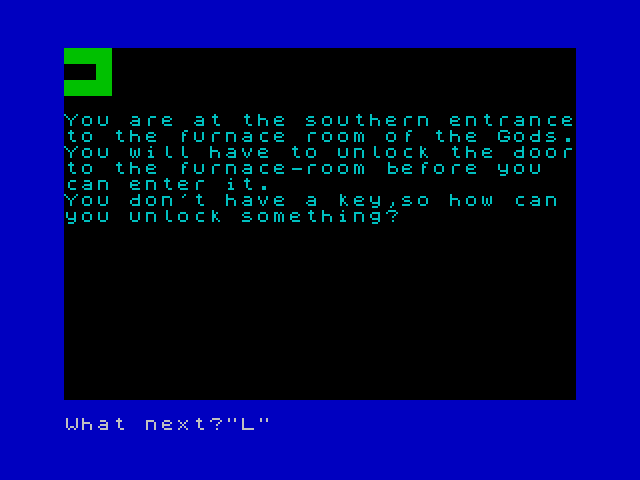
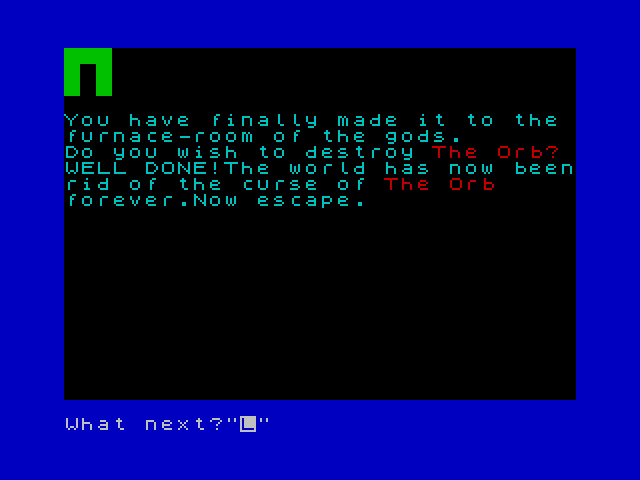
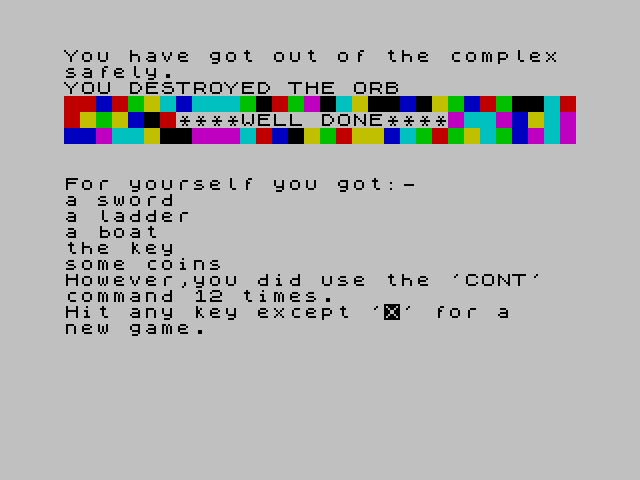
I mostly played the ZX Spectrum version and I had some hanging crashes, like when trying to pick up some coins. A diamond crown (which needs to be traded for the key) needs to be picked up with TAKE DIAMOND, since TAKE CROWN hangs the game. I tried the Dutch edition of the VIC-20 version (can’t find the English one anywhere), but it doesn’t seem to be any better-coded; I managed to walk into a wall and crash the game.

Blue is the start, yellow is the furnace where the orb is destroyed.
I recommend the solution by Exemptus if you’d like to read more details; in the end this was just a disaster. If the random generation had somehow been done carefully (akin to Mines from 1979) and the overall map was laid out properly, the concept would work. This could have been a proto-version of Tower of the Sorcerer-style games (*), except the author didn’t have the chops to pull one off.
…or maybe they did? Ian Richards released another adventure later the same year, called, quite creatively, The Quest. That’s where I’ll be going next time. EDIT: The Quest is an RPG. More details below; it isn’t worth making an entry for, so I’ll be moving on to a different author.

Yes, game, because you blocked the key in with Satan, so there is no way to win without the cheat.
(*) If you’re unfamiliar with Tower of the Sorceror, this reddit thread should help. It’s a game laid out like an RPG but everything is carefully controlled so it is in reality a resource management game. DROD RPG is a good later iteration for Western audiences, and there’s roughly a gajillion of the games written in Chinese.

This one’s called Heaven and Earth Realm Aftermath. (Link to play online.)
ADD: After trying The Quest I can safely say it is an RPG. It’s basically Wizard’s Castle but the floors aren’t completely open and can have dead ends. You start with a lamp and you can shine it in various directions. I fought a minotaur, ran out of arrows, and then found myself stuck on the option to use a flare (which shows information about the minotaur) or to use bribery (which didn’t work) so I had to reboot the game. I found a gemstone in one room, left, came back, and then found a completely different gemstone in the same room. This seems to be just as broken as Orb and I apologize to the RPG chronobloggers for finding this.



Where I softlocked after running out of arrows. The game doesn’t give you the option for sword/armor shopping at the start like regular Wizard’s Castle does.

I presume that’s meant to be “Only one other person”? Also, that link doesn’t work – it just goes to “peter%20lovett”.
fixed, thanks!
Despite the design nadir that Orb embodies, Ian Richards went on to become a decent coder on the Speccy. He surfaced many years later and worked on some well-known games as a freelancer for Codemasters, Powersoft, Zeppelin and others. He also supposedly co-authored the semi-mythical Great Giana Sisters Spectrum port, which is said to have existed as a prototype demo (supported by actual reviews in magazines, although no copies have ever surfaced) but never published.
I was going to mention Ian Richards’s later career in my second post, but there isn’t going to be one since it fell on the RPG side of the fence.
Have you ever found any interviews with him? I was turning up blank.
No joy, I’m afraid.
Pingback: Des Cavernes dans le poquette (1982) | Renga in Blue